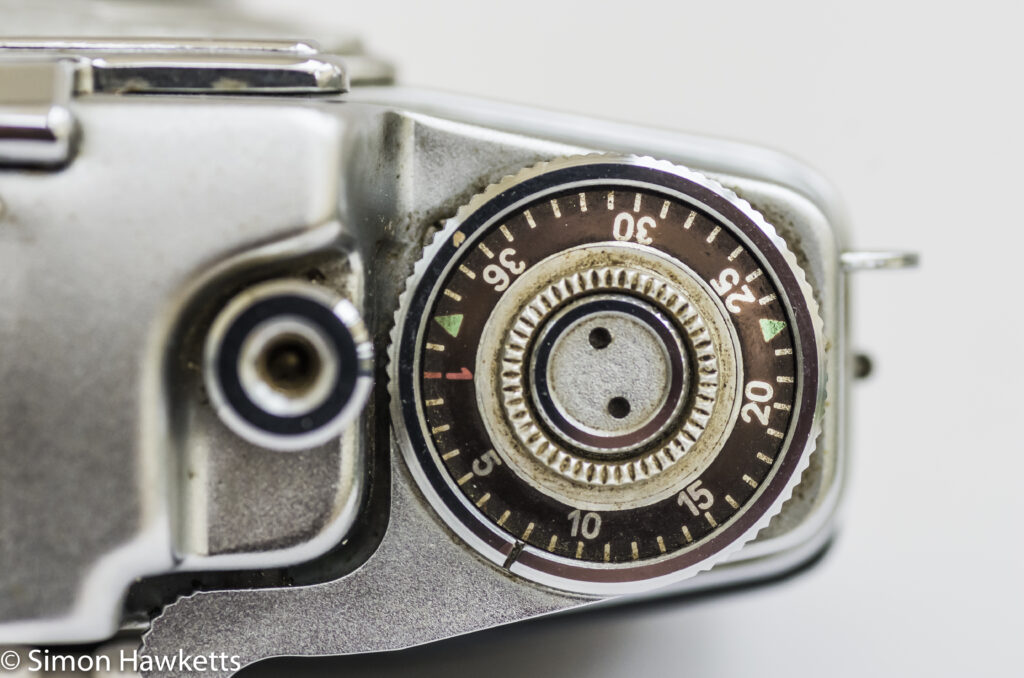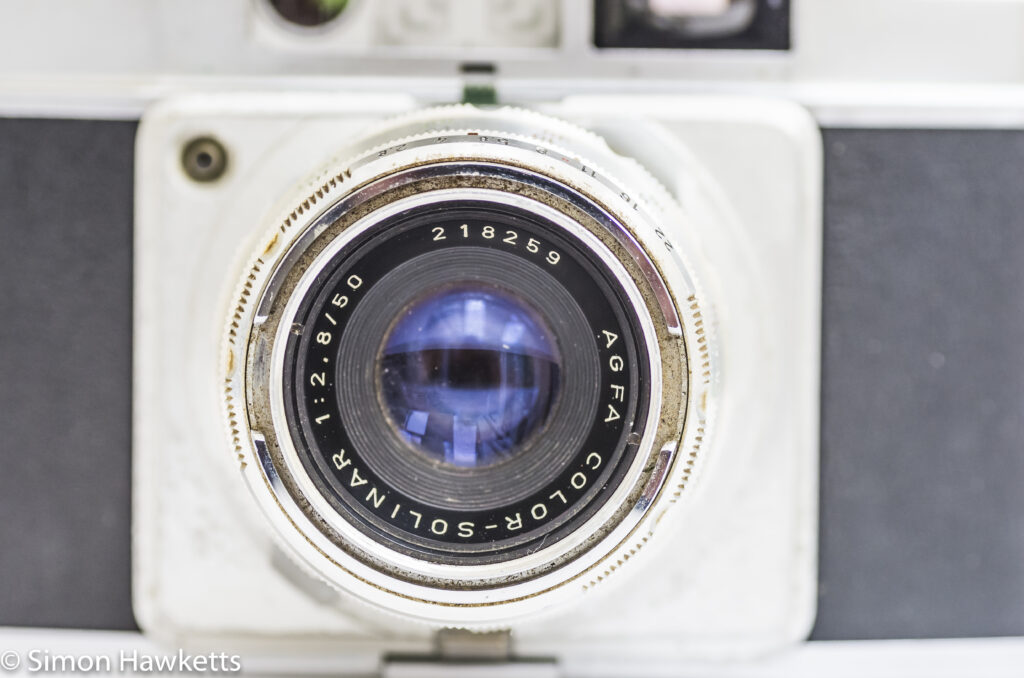A Very Desirable Agfa Ambi Silette rangefinder camera
This is a review of the Agfa Ambi Silette 35 mm interchangeable lens rangefinder camera, which was a very desirable camera when it was introduced into the Agfa range in the late 1950s.
My Ambi Silette Camera
I’ve wanted to get an Ambi Silette since I saw one when I was doing some research on my original Silette camera which I bought last year. Unfortunately they are not very common, and are normally overpriced, so it’s taken since then until I found one at a reasonable price.
This camera was bought from a seller on eBay for about £18 which included the 50 mm Agfa color-solinar lens, but was sold with no guarantee that it was working. I looked as if it was complete, however, so I thought it was a reasonable risk and put a bid on at the last second. As it happens, I wasn’t alone in wanting an Ambi Silette and in the end won it by only 50p from my closest rival.
When the camera turned up I found it was in reasonable physical condition with very little damage, but a bit of wear to the paint on the front panel which the lens mount fits on. As usual for a camera of this age, there was quite a bit of dirt ingrained into most of the little areas where dirt gets to.
Unfortunately, the description of not working was completely accurate because the film advance was very reluctant to move and had to be helped back afterwards and the shutter only made the odd clicking noise with no sign of movement from the shutter blades.
Fortunately, I was able to fix both these issues and the camera is now working like new. During my repair operations, I was also able to clean most of the component parts as well, so it also looks much better than it did a few days ago.
Pictures of the Agfa Ambi Silette
The gallery below shows some pictures of the Agfa Ambi Silette in its original, uncleaned condition.













Agfa Ambi Silette description
The Ambi Silette was the top model in Agfa’s rangefinder line up and boasts a fine rangefinder focusing aid with the advantage of interchangeable lenses. It’s a reasonably small, although by no means lightweight camera which is instantly recognisable by the trademark ‘Ambi Silette’ cover plate which folds down over the viewfinder and rangefinder.
Lenses
There was a range of 3 lenses made for the Ambi, a 35 mm wide angle, a 50 mm standard lens and a 90 mm portrait telephoto lens. Each of these lenses were designed specifically for the Ambi, and have the same 37 mm filter diameter so that any filter or lens hood which would fit one lens would fit all the others as well.
Because the change of lens focal length would mean a consequential change to the composition of the picture, there is a switch on the top of the camera which is used to select the lens being used. When the switch is changed, the composition lines in the viewfinder change with it, so the photographer can see the effect of the new lens on the photo they are taking. In fact, since it only alters the viewfinder composition lines, the switch position can be trialled before the lens is changed, so the photographer can actually see which lens would give the best view of the scene – neat.
Another neat feature of the Ambi focusing system is that the composition lines also move with the focusing to correct for parallax error. The focus position of the lens is transmitted to the rangefinder unit to assist focusing, and the same information is used to shift the composition lines as the focus distance changes. This system gives some of the advantages of an SLR without the bulk or size issues, although of course it would only be accurate for the lenses supported.
The lens mount on the camera is designed specifically for the Ambi and is also an interesting design. The lens can be mounted by matching a red dot on the lens with a red dot on the camera mount and then pressed and twisted to lock, but the system is actually cleverer than that. It’s possible to just push the lens into the mount and rotate it until it clicks into place, and then a final short turn will lock it.
To release the lens, there is a button on the bottom of the lens mount which is pressed, and then the lens is twisted and pulled to free it.
Camera Controls
The controls are laid out in a conventional way for a camera of this age. The aperture control is on the front of the lens, with the shutter speed control at the back of the lens mount. There is no exposure meter built into the camera, so an external exposure meter is needed to judge the exposure or use of the Sunny 16 rule would work.
One thing which is a bit annoying is the cover, which needs to be lifted to view through the viewfinder and use the rangefinder to focus the camera. I assume it was fitted to keep dirt off the viewfinder, but I keep forgetting to flip it up and find the view obscured. It’s probably something you get used to, however.
The focusing is as good on this Agfa as it is on my Super Silette L, which is to say it’s very bright and noticeable. On this camera, the superimposed image is green, and it really stands out and makes focusing very fast. Unfortunately, following my repairs it is very slightly out at the moment, but I’m pretty sure it’s a simple adjustment to correct (I’m not surprised that it’s shifted – I had to have the whole front assembly off).
Other features
At the top of the lens mount is a small selector which switches the flash sync from X to M and also has a setting for a self-timer. I found on my camera that the reason the shutter wouldn’t work was because someone had selected the self-timer, and it had frozen. Although I fixed this (details to follow in another post) I haven’t re-tried the self-timer yet.
There is a flash sync socket in the top corner of the front panel, which is used for flashes fitted to the accessory socket, which doesn’t have a hot shoe.
The rewind knob has a small window in it which acts as a film type reminder. At first, it seems a bit difficult to set, but it’s actually quite easy. You need to put your thumb or finger under the bottom rim, and then turn the knurled edge, and this will allow the film speed or type to be set. The handbook for the camera lists the somewhat cryptic codes the reminder can display and what they represent (colour negative film, reversal film, film speed etc)
At the bottom of the lens mount, under the lens release button, is a pull-out flap which acts as a table stand for the Ambi.
Impressions
My impressions are that this is a quality camera with some solid engineering. Now I have it working, it is a really nice experience to focus and take pictures with it, and the Synchro Compur shutter has a beautiful, high quality ‘mechanical camera’ sound.
Once I have the rangefinder calibrated, I’m going to try a roll of film through it, and I’ll publish the results.
Ambi Silette specifications
- Agfa Ambi Silette 35 mm interchangeable lens rangefinder camera
- Synchro Compur shutter
- 1 sec to 1/500 sec + B shutter speeds
- Rangefinder focusing
- Selector switch allows composition frame to change to compensate for lens fitted
- Composition frame changes with focus to compensate for parallax
- Agfa Color-Solinar 50 mm f/2.8 lens fitted
- Coated lens
- Aperture range, f/2.8 to f/22
- X & M flash sync
- Self-timer
- Tripod bush and built in table stand
- Frame counter on film advance
- Film type reminder on rewind knob
- Dust cover over viewfinder / rangefinder
- Manual available here
Discover more from Everything Vintage
Subscribe to get the latest posts sent to your email.







